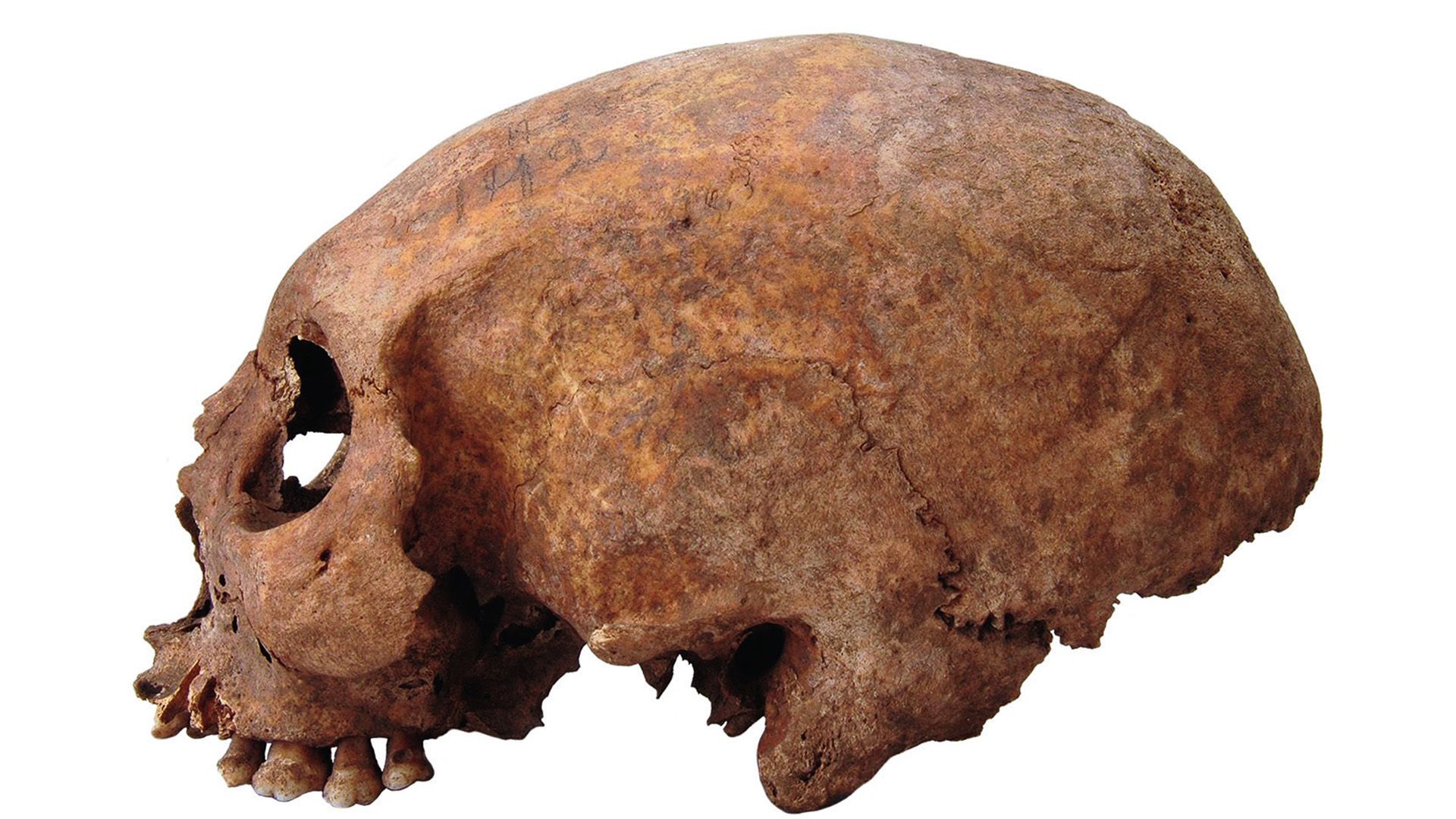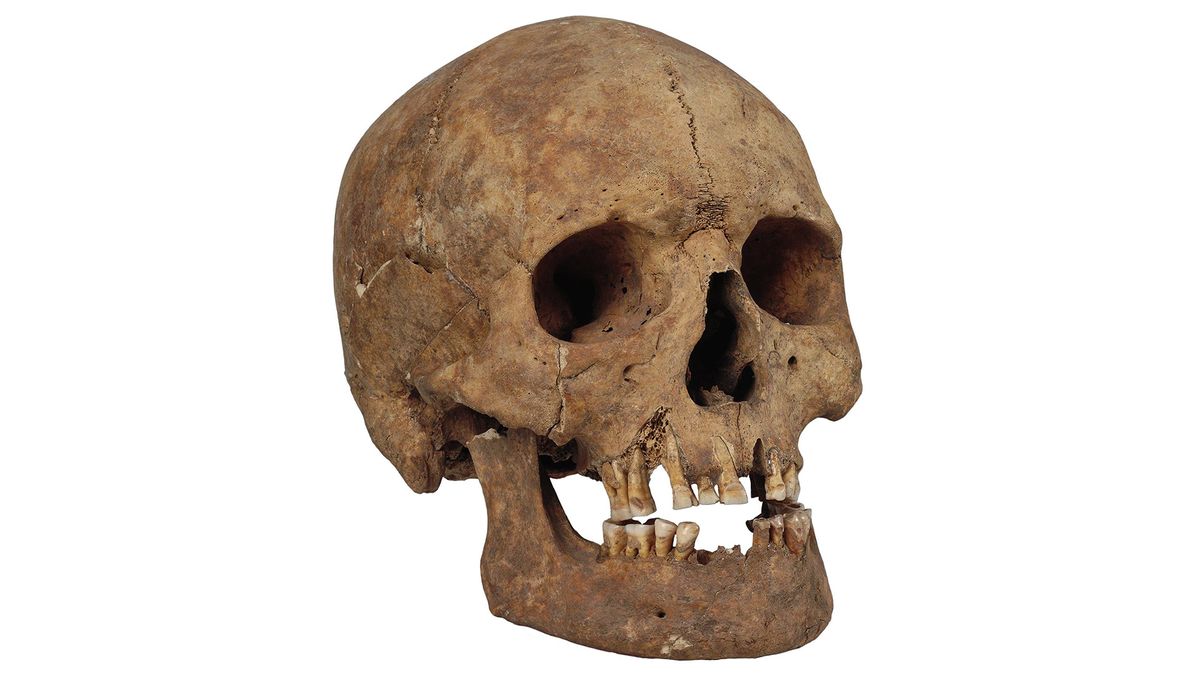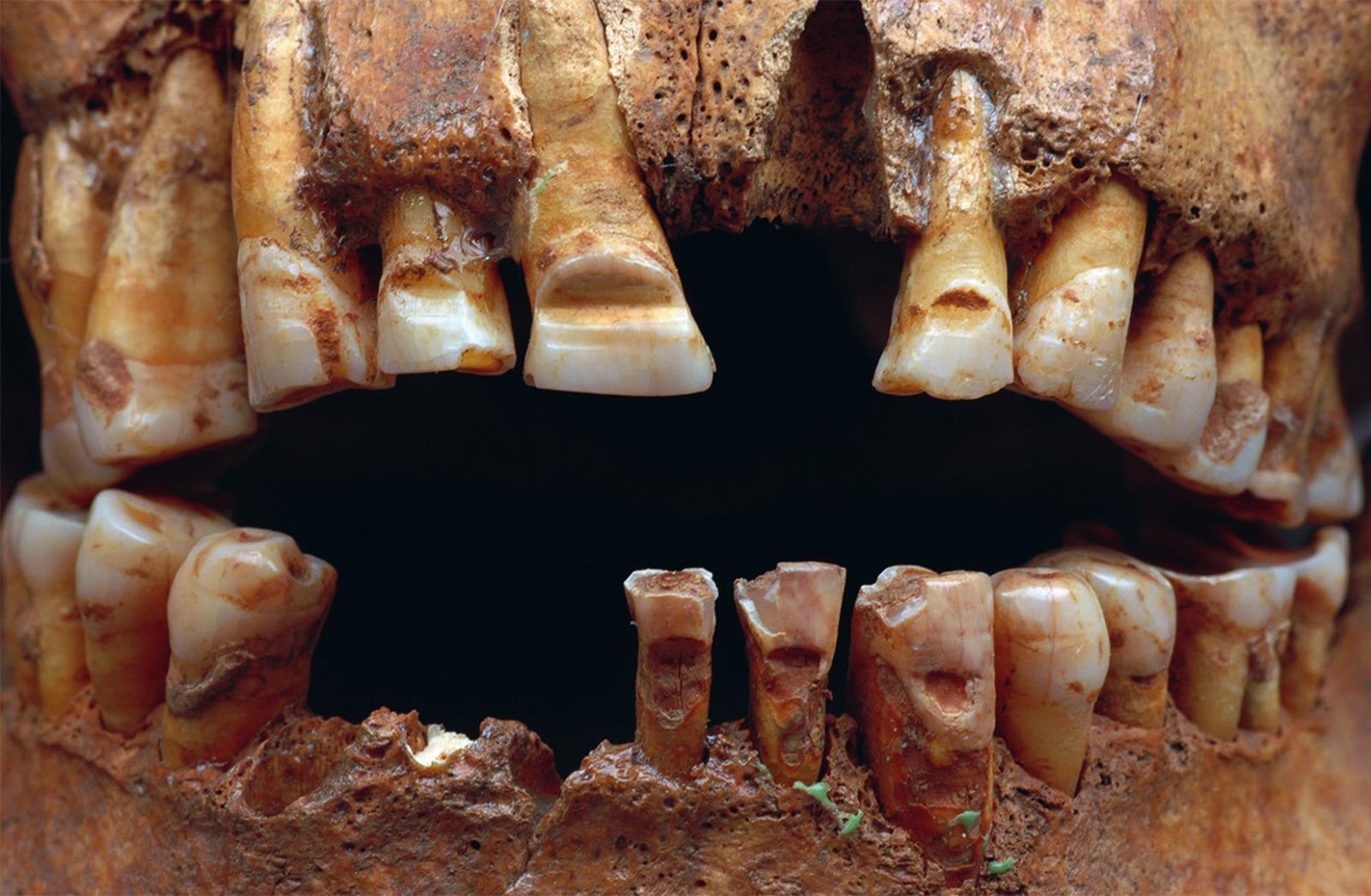The secret of the conical skulls and filed teeth of the Vikings
Follow us on Google News (click on ☆)
These cranial modifications, likely made at birth through the use of bandages, seem to indicate long-distance trade contacts with the Black Sea region. This practice was inspired by the Huns, a nomadic people of Asian origin.

One of the artificially elongated skulls of a woman buried in the 11th century on the Baltic island of Gotland, which at that time was an important trading center.
Credit: © SHM/Johnny Karlson 2008-11-05 (CC BY 2.5 SE)
The presence of these modified skulls on Gotland, exclusively among women, suggests that this practice was limited to a few individuals of the same family over several generations. This tradition could highlight their connection with a distant region where these modifications were more common.
The study, published in the journal Current Swedish Archaeology, also examines the filed teeth found on skulls across Scandinavia. These dental modifications, observed only on the island of Gotland, could have served as an identification mark for certain groups of Viking traders. The authors of the study propose that this practice could have been a rite of initiation.
The article suggests the possibility that the teeth were used as tools, for example, in leatherworking. However, the marks observed must have been intentional, as indicated by modern experiments requiring an iron file to create these distinctive grooves.


The skull of a man with filed teeth, buried on Gotland during the Viking Age. The same cemetery contained 12 other individuals with filed teeth.
Credit: © SHM/Gabriel Hildebrand 2011-12-09 (CC BY 2.5 DEED)
The study highlights the central role of Gotland as a commercial hub during the Viking era and into the Middle Ages. However, the custom of filing teeth seems to have disappeared after the 12th century, coinciding with the rise of classic merchant guilds.